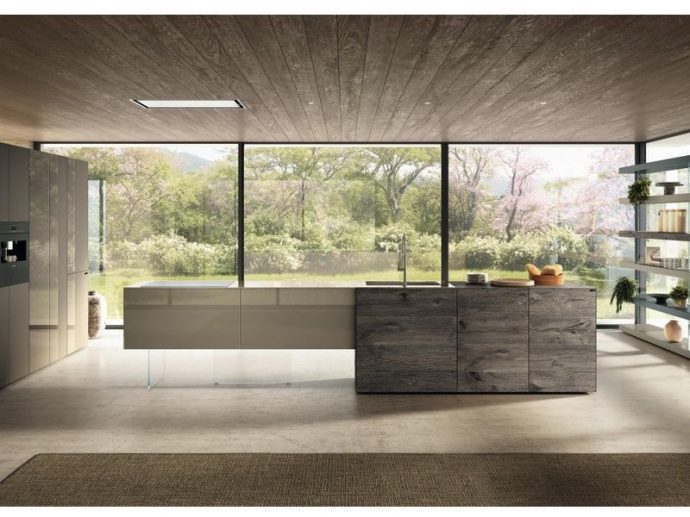Categories more
- Adventures (17)
- Arts / Collectables (15)
- Automotive (37)
- Aviation (11)
- Bath, Body, & Health (77)
- Children (6)
- Cigars / Spirits (32)
- Cuisine (16)
- Design/Architecture (22)
- Electronics (13)
- Entertainment (4)
- Event Planning (5)
- Fashion (46)
- Finance (9)
- Gifts / Misc (6)
- Home Decor (45)
- Jewelry (41)
- Pets (3)
- Philanthropy (1)
- Real Estate (16)
- Services (23)
- Sports / Golf (14)
- Vacation / Travel (60)
- Watches / Pens (15)
- Wines / Vines (24)
- Yachting / Boating (17)
Sculptural furniture: when functional objects become works of art
Published
04/17/2025In the landscape of contemporary interior design, one trend stands out for its ability to transform space and stir emotion: sculptural furniture. Far more than simple utilitarian pieces, these objects embody a bold aesthetic in which functionality becomes a means of artistic expression.
Furniture is no longer merely a practical element of everyday life – it becomes a visual statement, capable of shaping the space and expressing a distinctive identity.
The emergence of furniture as an artistic language
Once confined to a purely functional role, furniture has now broken free from the constraints of neutrality to explore freer, more creative forms. Inspired by sculpture, architecture and contemporary art, designers are crafting pieces that command attention while fulfilling real domestic needs.
Whether it's an armchair with organic curves, a table with sculptural legs, or a floating, asymmetrical bookcase, each creation finds a delicate balance between purpose and expression.
This interplay between form and function is central to the sculptural furniture philosophy. Even in the context of Italian kitchen cabinets, this approach can be seen: bold lines and artistic volumes meet precise utility, turning even the most practical areas into visually compelling environments.
Between formal balance and visual emotion
What defines sculptural furniture above all is its emotional impact. Its presence within a space goes beyond decoration, establishing a true visual language. Dramatic lines, dynamic volumes, and occasionally monumental proportions give these pieces a narrative strength that draws the eye and shapes the room’s atmosphere.
These furnishings are not meant to disappear into the background – they engage in conversation with their surroundings. They introduce visual breaks, define open-plan layouts, and act as focal points around which other elements revolve. In a designer kitchen, for example, a sculptural chair or striking pendant light can shift the entire perception of the space.
The importance of materials in artistic expression
The expressive power of sculptural furniture depends heavily on the thoughtful use of materials. Wood, metal and glass become the mediums through which a designer gives shape to their vision.
Wood, warm and organic, is often worked into smooth curves or hand-finished facets. Metal enables strong, geometric structures. Glass adds lightness, transparency and visual depth.
Every detail matters: the finish, the joinery, the proportion – all must be executed with care and precision. These are pieces that demand excellence and offer presence.
When space becomes a gallery
Choosing sculptural furniture means rethinking the relationship between space and object. The interior becomes a personal gallery, where each piece contributes actively to the visual composition. Rather than producing a cold or impersonal environment, this aesthetic creates energy – enhancing the personality of both the space and the people who inhabit it.
In a living room, a sculptural sofa might redefine the layout and influence how people move through the space. In a bedroom, a bold bed design becomes the central focus around which everything else is organised.
Beauty in the service of everyday life
Sculptural furniture achieves a rare synthesis of art and design: it elevates daily life without compromising usability. These are not merely decorative pieces – they are objects made to be experienced. Their beauty lies not just in appearance, but in how they enhance the atmosphere of a room, making it more inspiring, more characterful, more alive.
LAGO: Made in Italy furnishing solutions for flexible, elegant and functional interiors
Since 1976, LAGO has been designing interiors that combine aesthetics, modularity and functional intelligence. With roots in artisanal traditions dating back to the late 19th century, the Italian company founded by Giuseppe Lago is now present in more than 20 countries, with over 500 retail partners and more than 200 employees.
LAGO’s design philosophy focuses on creating tailored interiors through modular, customisable collections that adapt to contemporary living.
Clean lines, refined materials like glass, wood and metal, and precise detailing define the LAGO aesthetic. Suspended systems, visual lightness and intelligent use of space are signature features of its central island kitchens, which balance practicality with design refinement.
Active in both residential and hospitality contexts, the brand takes a holistic approach: each product is designed as part of a cohesive ecosystem, allowing bookcases, beds, tables and modular walls to integrate naturally into diverse environments.
Sustainability lies at the core of LAGO’s production. Materials are chosen with strict environmental criteria, and production cycles are optimised to reduce ecological impact. The brand’s blend of technological innovation and artisanal craftsmanship ensures long-lasting quality.
Digital tools play a key role in enhancing the user experience: the online configurator enables full customisation, while personalised consultancy supports clients at every step. With a human-centred, responsible and visionary approach, LAGO is redefining the standards of contemporary interior design.















